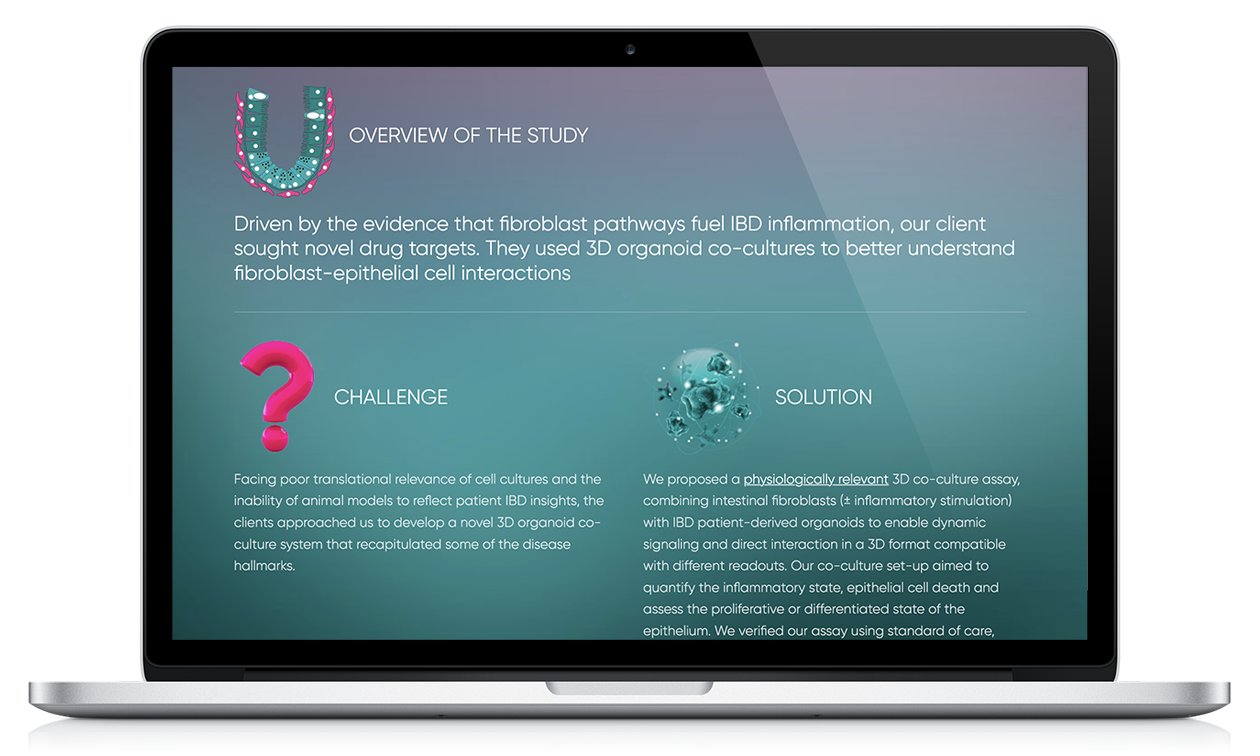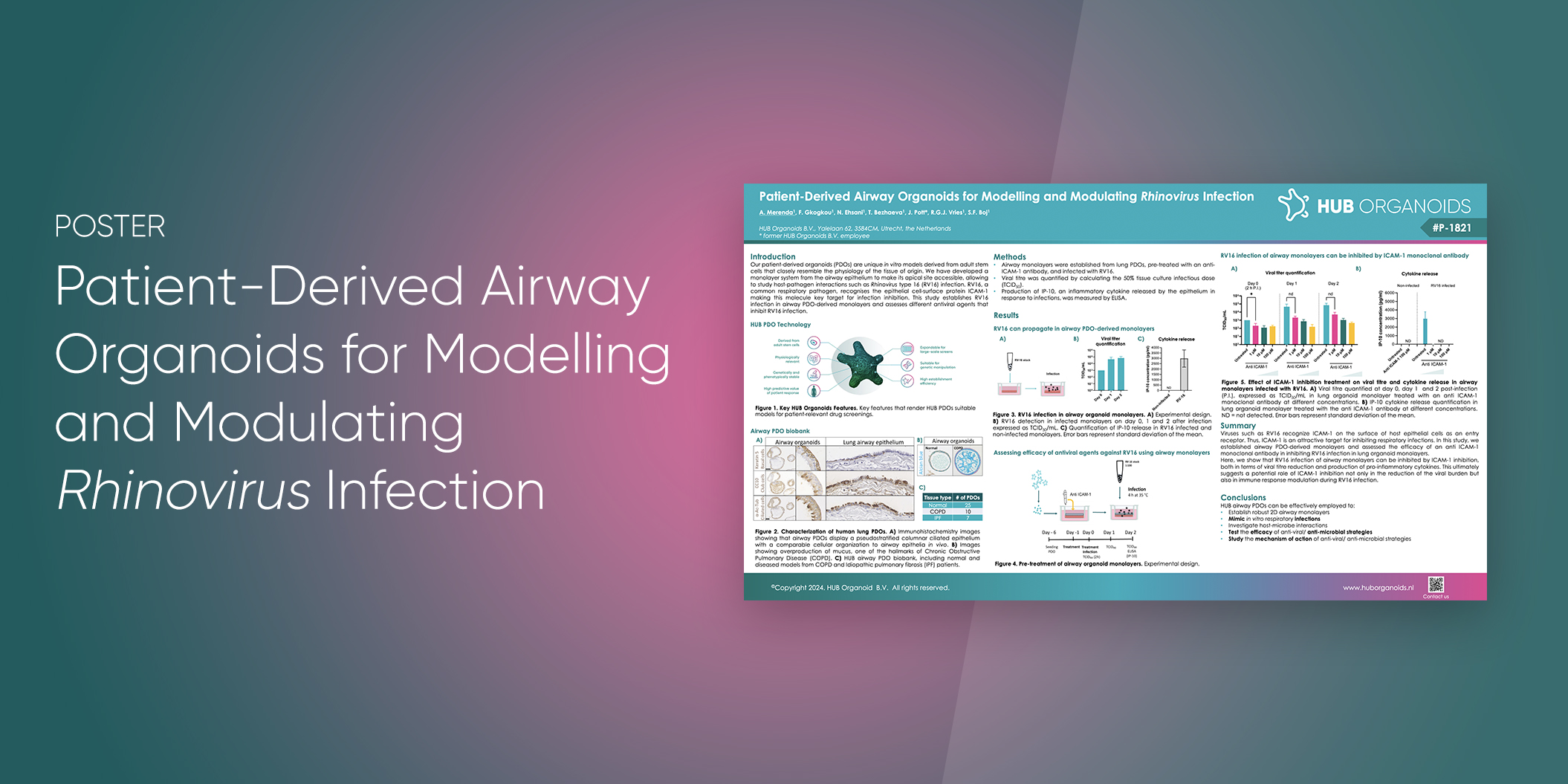

Our PDO Monolayers are engineered to faithfully recapitulate the composition of the epithelium in vivo, encompassing both stem cells and all differentiated lineages. This technology enables the culture of patient-derived biopsies from airway, intestinal, liver, or kidney tissues into uniform monolayers. The system is ideally suited for studies involving apical or basolateral infection routes, dose–response antiviral testing, cytotoxicity assessments, viral or bacterial replication analyses, and evaluations of barrier integrity.

Our human airway organoid monolayers offer a powerful platform to study respiratory viruses like RSV and rhinovirus. They enable viral replication analysis, cytokine profiling, and live-cell imaging, while supporting antiviral dose–response testing and mechanistic insights into viral entry and spread – providing a complete toolkit for infection research.
Integrate immune cells, such as macrophages and T cells, as well as fibroblasts or endothelial elements, to capture host response dynamics. This approach enables modeling of microbiome–pathogen–host interactions, including commensal-mediated suppression of pathogens or dysbiosis-driven enhancement of infection. It also allows the study of immune evasion, cytokine storms, immunopathology, and drug modulation within a 3D patient biology context.


POSTER PRESENTATION

PUBLICATION